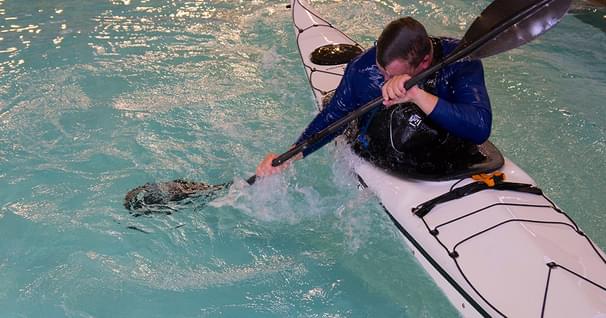Group Dynamics
Whatever type of river you're running, you've got to be comfortable with your paddling group. Too often, paddlers cruise down the river without consideration for the other members in their group, or for other groups on the river. First of all, you've got to be sure that you can count on your paddling partners to make wise decisions, because they can have a major impact on everyone in the group. Your group also has to acknowledge that they are only as strong as the weakest paddler. Don't expect to move downstream any faster than is comfortable for the weakest paddler.
Signals
Make sure that everyone in the group understands the signals that you use on a river. Lack of communication is a very common and preventable cause of accidents. There are some universal signals that everyone needs to know, such as "stop," "go ahead," and "I'm okay," but many paddlers will have a number of other signals that they use on the river. Make sure you discuss these signals before hitting the water.

Spacing
Crowding can be a major problem on some rivers, so be careful that you aren't pulling out in front of someone who's upstream of you. Remember that upstream boats have the right of way. When heading downstream, it's nearly always best to move one at a time. This is especially important when there are holes to negotiate that can stop a paddler and cause a pileup, such as at the bottom of a waterfall. Collisions between paddlers create some of the most potentially dangerous scenarios and need to be avoided. Don't let your anxiety on the river get the better of you. Be patient; don't rush; and make sure things are clear below before setting out.

Spacing is also very important on tight rivers with small eddies. You never want to put on a river like the one pictured, with a large group. If you're in a large group, split yourselves into smaller groups. There's nothing more frustrating than finding yourself crowded into a small eddy, and there's nothing more frightening than not being able to fit in an eddy and having to run the following rapid blind.
Group Awareness
When paddling challenging whitewater, it's easy to get caught up with what's happening in front of you, so don't forget to keep your eyes on the paddlers behind you. If you're not watching them, who is? Make sure that you pull over whenever possible and set yourself up in a position of safety from which you can help the next paddler through the rapid. Keep in mind that the less-confident paddlers usually hang back. The most nervous paddler will often opt to run a rapid last, but this should never happen, because if they get into trouble, it may only be possible to help by moving to them from upstream. For this reason, the strongest paddler should always lead the group and the next strongest paddler should be last, in what is called the "sweep" position.
Ken is a World Champion Kayaker and the author and producer of an award winning series of instructional kayaking books and videos. He was recognized by "Paddler Magazine" as one of their 'Paddlers of the Century'. For more information, visit www.helipress.com.
Illustration by Paul Mason
Photo by Mariann Saether
Related Articles
As the days get shorter and the weather gets colder, it becomes harder to get out and paddle and easier…
Mention “pool session” and the first image that pops into most kayakers minds is a class in how to roll.…
Paddling alone is a recipe for danger. Bring a buddy and stay safe on the water.



